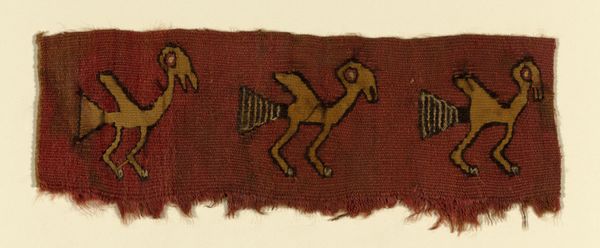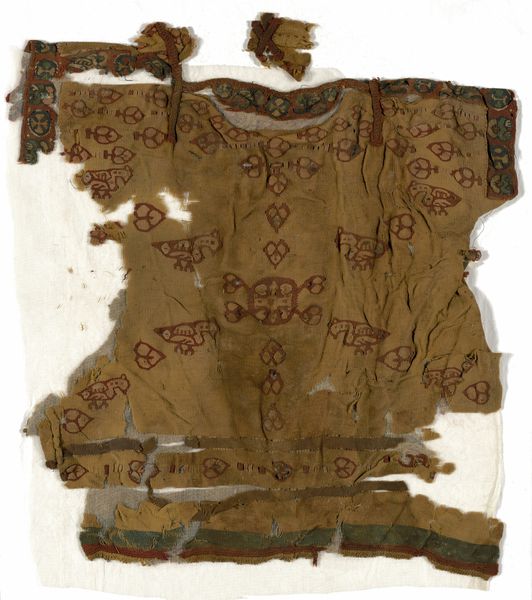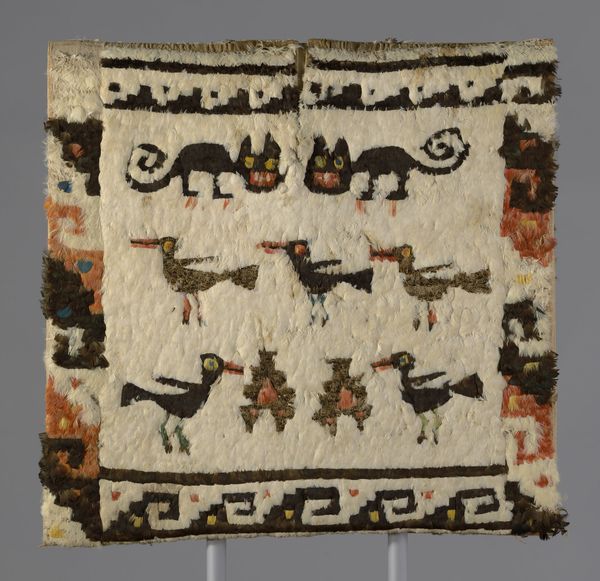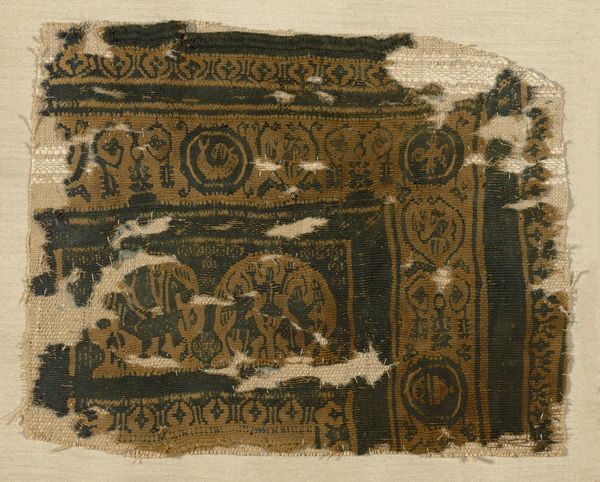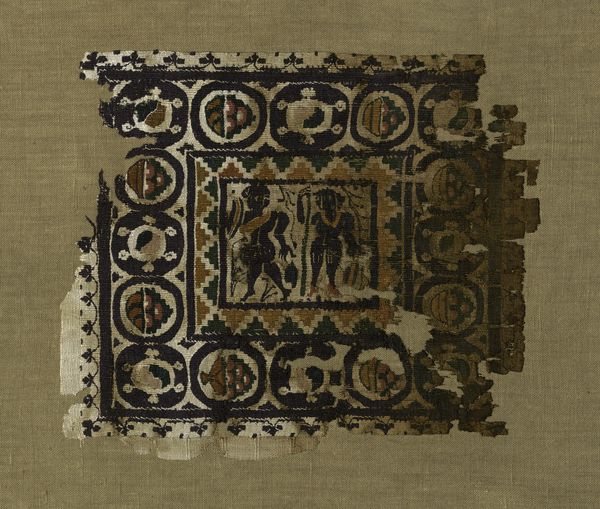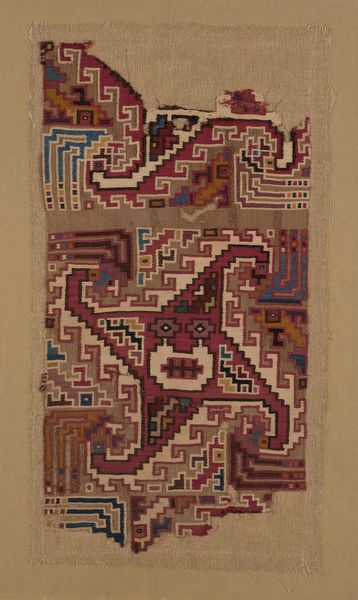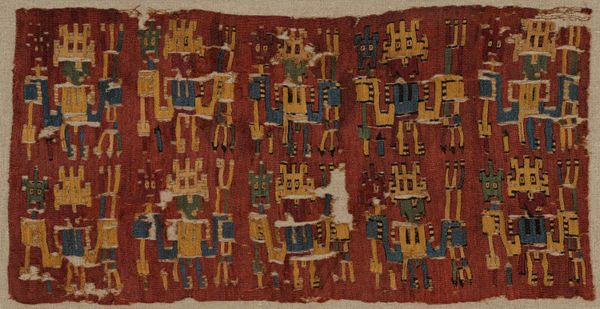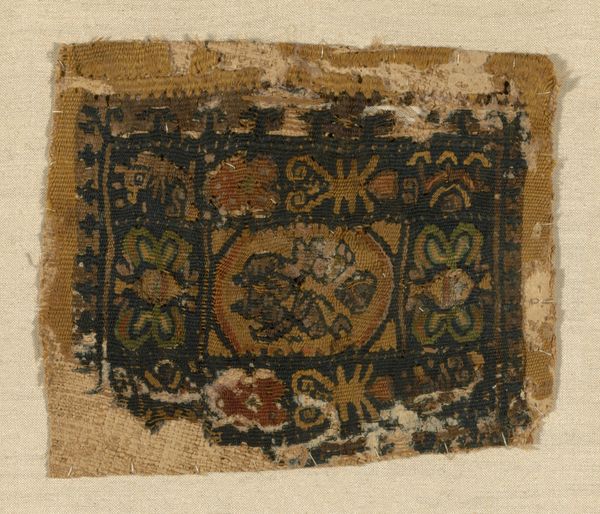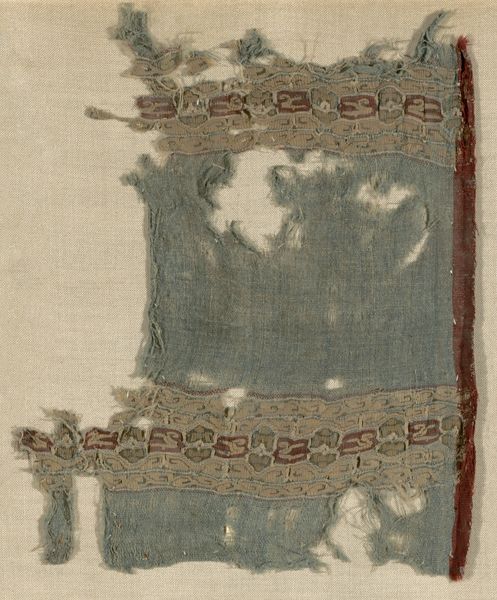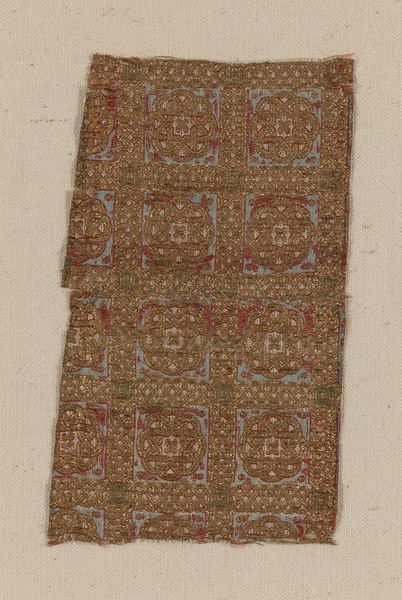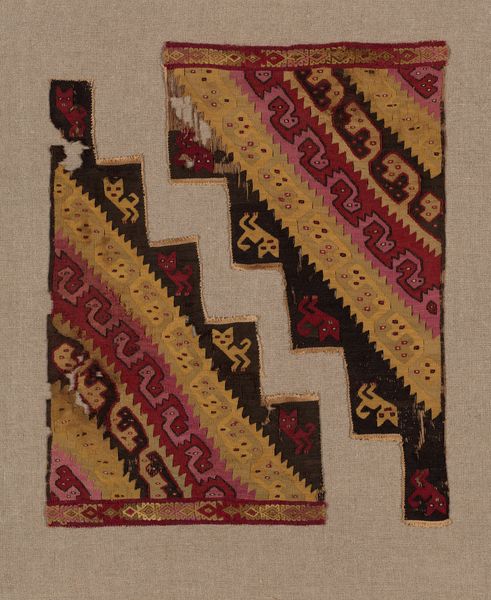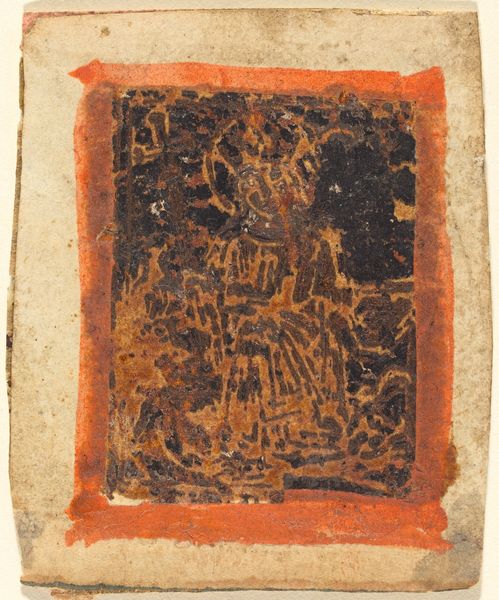
fibre-art, weaving, textile
#
fibre-art
#
weaving
#
textile
#
geometric
#
indigenous-americas
Dimensions: 76.2 × 57.2 cm (30 × 22 1/2 in.)
Copyright: Public Domain
Editor: So, this textile work is titled "Fragment," dating potentially from 1250 to 1532. It’s attributed to the Chimú culture and is made of woven fibre. I'm struck by its grid-like structure and the stylized bird motifs; there's a kind of repetitive, rhythmic quality. How do you interpret this work? Curator: This "Fragment," as you noticed, isn't just a decorative piece. Textiles in Andean cultures were powerful signifiers. Consider the complex social stratification of the Chimú society. High-status individuals often commissioned elaborate textiles which showcased the community's collective skill and artistry. This piece is particularly interesting when you examine what looks like modular representation of birds inside of squares: Could these stylized birds represent different lineages or social groups within the Chimú civilization? Editor: That's a compelling point. It’s almost like each bird motif tells a story. I was primarily drawn to the overall pattern but didn’t immediately consider its deeper social meaning. How would the piece's fragmented nature affect this kind of social reading? Curator: The fragmentation is key. Textiles held immense value; destruction of them in funerary contexts signified a transformation of status. Now, observe the way color is organized here: what does this tell you about the maker’s society? Editor: The use of earthy tones - the browns and reds. I see also dark blues... did these pigments possess symbolic significance in the Chimú worldview? Curator: Precisely. Each color held its own coded meaning within Chimú society. Red, for instance, was tied to power, life, and the sacred. Blues may have suggested sacrifice or divinity. These colour palettes may tell us about political identity. These were carefully selected and deployed to convey specific narratives. This isn't just art; it’s a form of coded communication from the past. Editor: So by looking at this fragment, we can decipher aspects of the power dynamics and belief systems embedded in the Chimú culture. That makes you wonder about our own textiles as records of cultural expression! Curator: Absolutely. Recognizing the cultural and social significance behind these textiles is a way to re-evaluate our modern preconceptions, a chance to hear the voices that have been marginalised in conventional historical narratives.
Comments
No comments
Be the first to comment and join the conversation on the ultimate creative platform.
